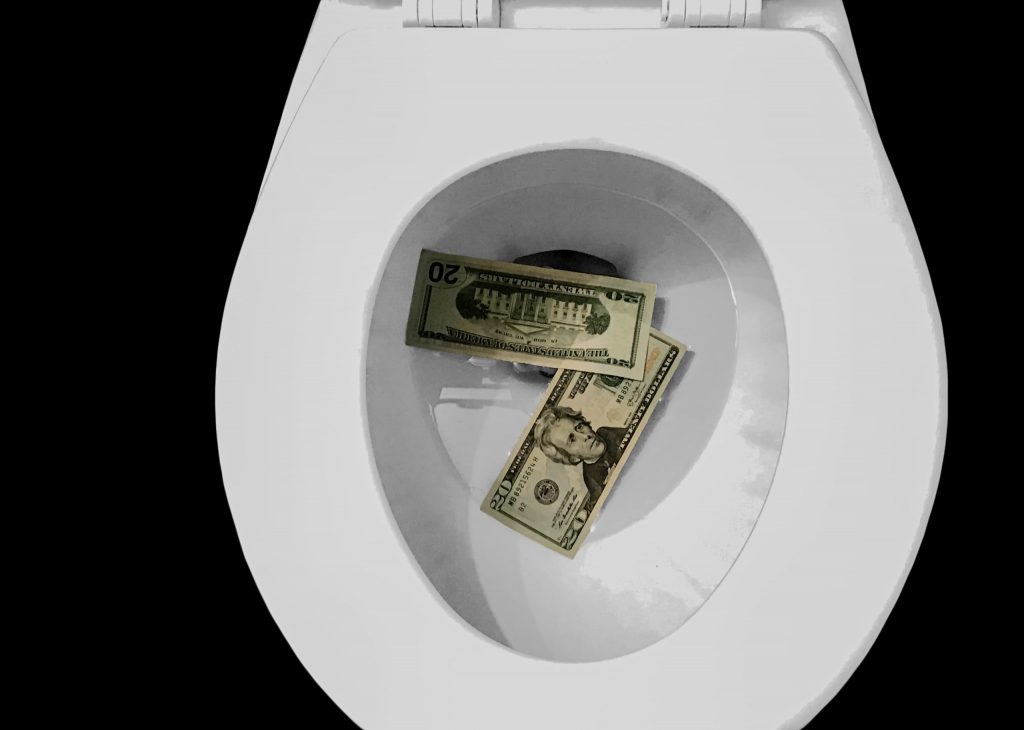THIS IS GOING TO “Be GROSS” It’s time to talk about something unpleasant, folks, because what you flush matters, and I’ll tell you why. Hold onto your seats while I take you through a guided tour of a typical wastewater treatment plant.
SOCKS, BASEBALLS, AND RUBBER DUCKIES. OH MY.
On any given day, wastewater treatment operators encounter a staggering variety of strange objects while operating and maintaining the equipment at their treatment plants. If it is small enough to fit through a typical household pipe, we’ve seen it. While at my job, I have encountered baby wipes, sanitary wipes, floss, hair, socks, miscellaneous clothing, a rubber ducky, thousands of feminine products, latex products (you know what I mean), a car key fob, ID badges, bandages, fruit stickers, candy wrappers, a regulation-sized baseball, and a twenty-dollar bill. Some of my colleagues in sewer collections have even claimed to find jewelry from time-to-time while emptying their vacuum trucks at the landfill. While these “treasures” make for funny anecdotes, they can create major problems in the sewer pipes as well as the treatment plants.
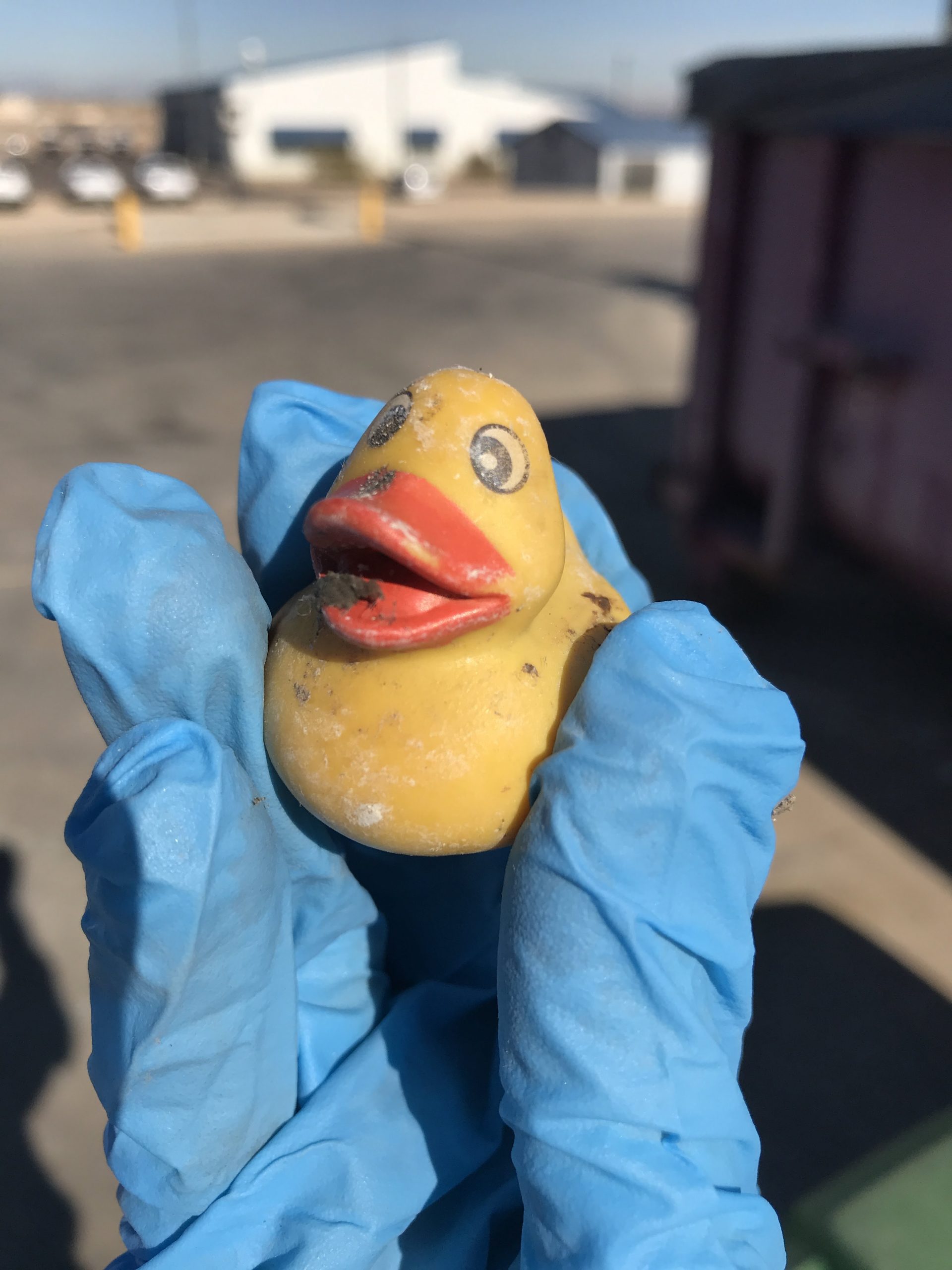
Due to recent widespread outages of toilet paper, many utilities are currently ramping up their messaging to residents regarding what not to flush. The simple truth is that napkins, paper towels, “flushable” wipes (they’re not really flushable), and other paper products should NOT go down the toilet. Period. Let alone any of the other oddities I mentioned previously.
BREAK IT DOWN FOR ME.
Toilet paper has been specifically engineered as a one-time-use product that is durable enough to “do the job” but breaks down fairly quickly when submerged and subjected to the scouring forces of the sewer or wastewater system. Other paper products, while biodegradable in the long run, do not break down quickly enough to be processed at a wastewater treatment plant. If they do make it through the miles of sewer pipe without accumulating and causing a blockage, they will have to be removed at the inlet end of the plant for the treatment process to continue effectively. If not caught in time, products that start getting caught on equipment must be physically removed. Why is that? Traditional wastewater treatment is engineered and designed to stabilize organic waste. In other words, the main process used to treat municipal waste is the same biological process of decomposition that happens in nature—but done at an industrial scale. To process the millions of gallons (sometimes hundreds of millions at larger plants) of municipal waste that we receive every day, the raw waste must be entirely broken down by the time it gets to our bioreactors. (Note: a bioreactor is a large tank where the biological processes of wastewater treatment occur. It is the heart—or rather the stomach—of a wastewater treatment plant.)
While treatment plants are designed with an initial trash-removal step that we call “headworks,” the system is not foolproof, and solid debris often does make it past the initial removal phase, causing problems with downstream equipment.
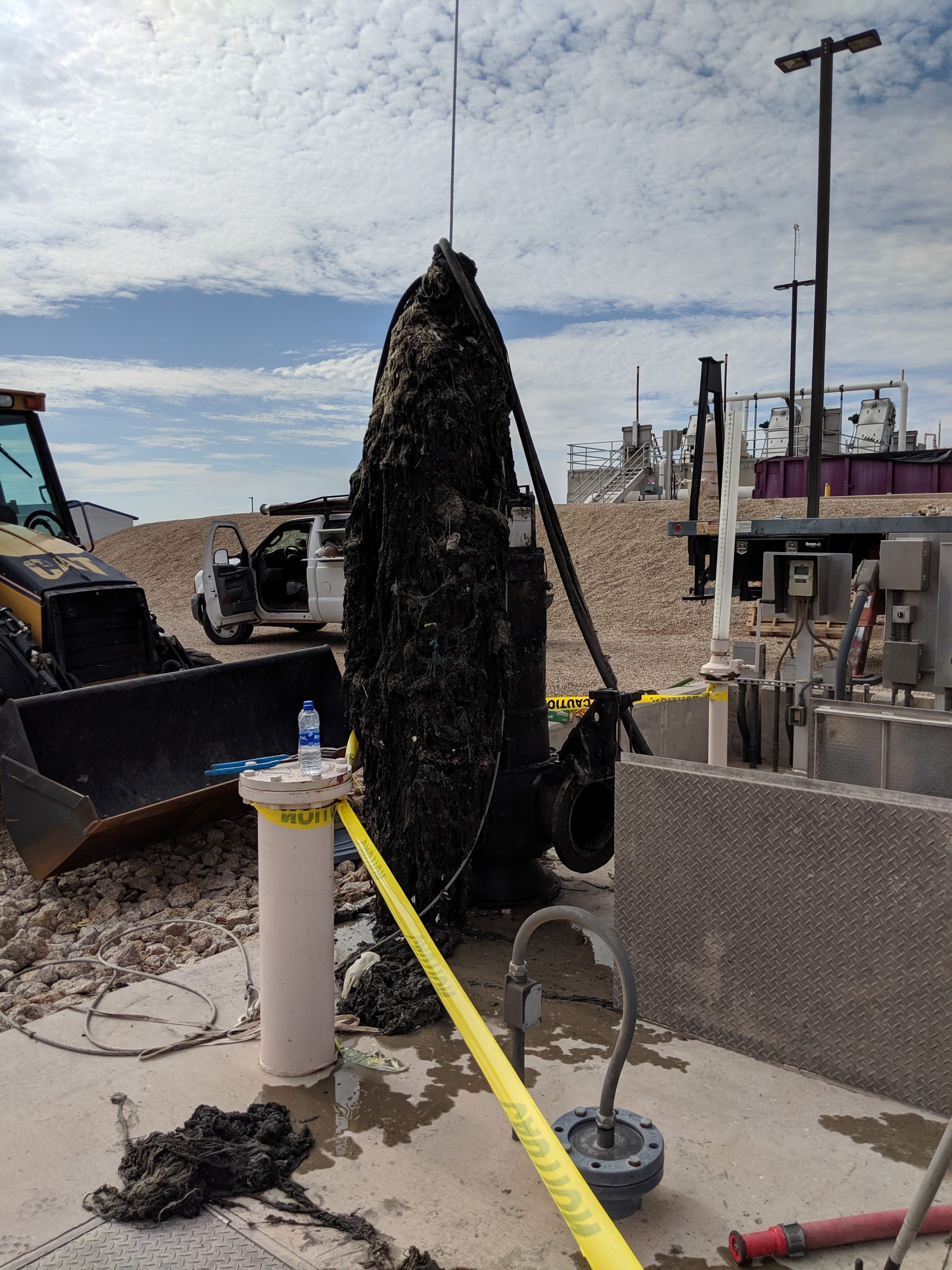
SHOW AND TELL.
The images shown throughout this blog are examples of the various types of equipment that operate submerged and are downstream from the plant’s headworks and therefore tend to accumulate solid debris to a point of failure. About once a year, the bioreactors or oxidation ditches are individually emptied for maintenance and repairs to the equipment housed in them. What is drained gets sent back to the start of the plant to be reprocessed. What is left after draining is a lot of solid garbage that should not enter that part of the plant in the first place. It tends to accumulate in the ditch, catching onto equipment and creating long strands of what we in the industry call “rags.” Rags are just a catch-all term for anything solid that doesn’t break down in the sewer system before reaching the plant: flushable wipes, tampons, napkins, Kleenex, hair, floss, water bottles, towels and clothing, candy wrappers, etc. The smaller non-biodegradable materials (eggshells, dirt, sand, orange peels, basically anything that people put into their garbage disposal), settle on the bottom of the ditch and create sand bar formations of what we call “grit.”
About once a year, operators climb down into the empty ditches to physically remove tangled rags from equipment and shovel piles of grit out of the bottom of the ditch. It is a very labor-intensive process and can be particularly unpleasant on a hot summer day.
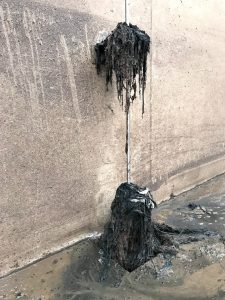
THIS IS PREVENTABLE.
While the cleaning of the ditches is a preventative maintenance task that every wastewater utility conducts, it is worth noting that the accumulation of rags on equipment can and does eventually lead to failure of the equipment. Rotors and mixers can eventually experience motor failure due to working against the resistance of a heavy load from a giant rag ball. Mud valves and gate stems get stuck with rag balls while trying to close them, thus preventing us from fully isolating a piece of equipment. A new rotor can cost up to $50,000 and a mixer can cost up to $20,000.
The utility’s goal is to protect the environment while keeping costs to the rate-payers (our customers) as low as possible. The more we all take responsible flushing seriously, the longer our equipment can last for the benefit of the environment and public health.
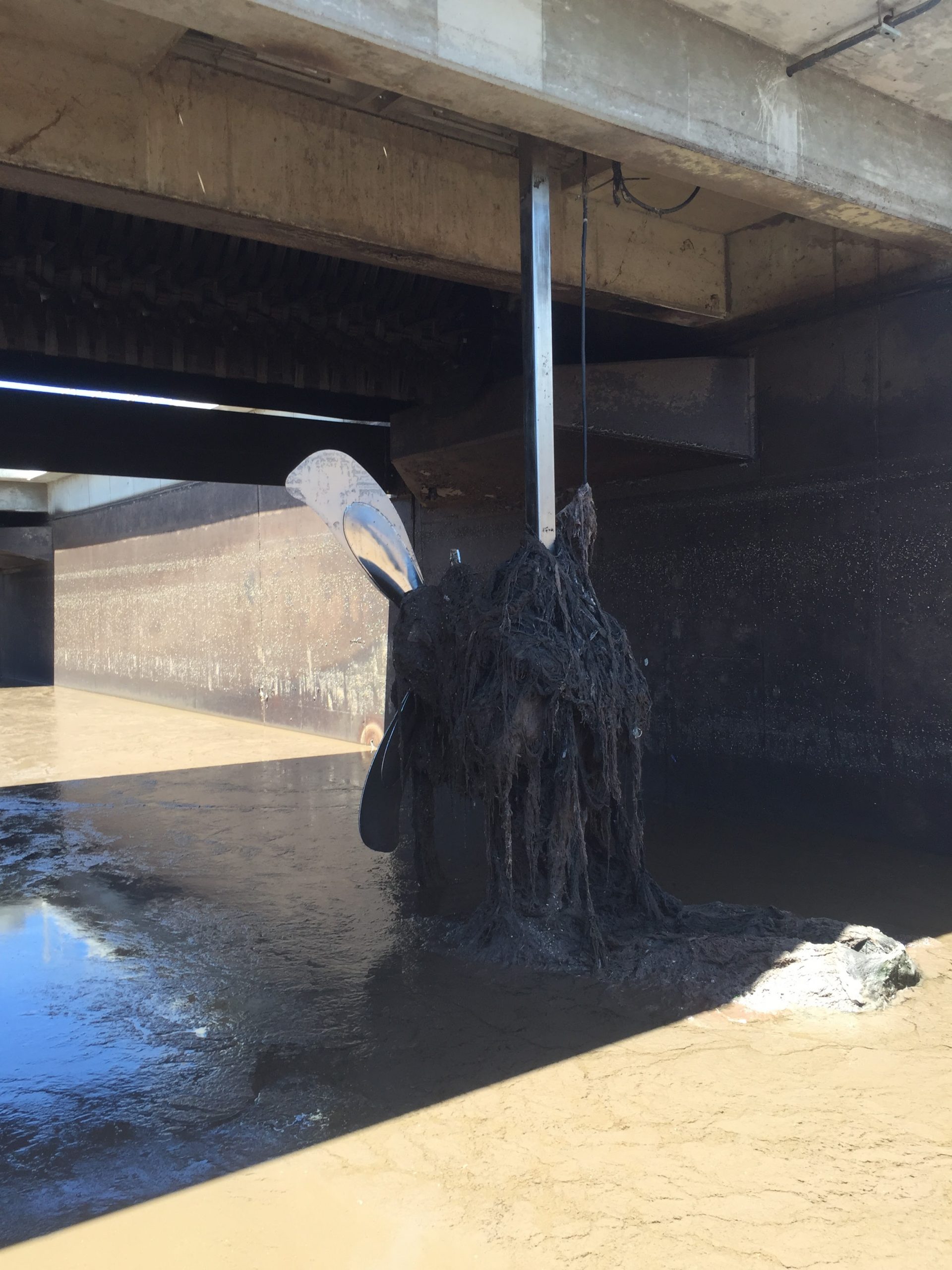
So, can it be flushed? The simple answer is that unless it is one of the three P’s — pee, poo, paper (toilet paper) – then NO!
Be G.R.O.S.S.
The City of Surprise Water Resource Management Department created a campaign in 2017 to help spread the word about what should and should not go down your pipes: Be G.R.O.S.S. stands for “Be Guardians Regarding our Sewer System.” If you’re interested in learning more about wastewater treatment and the ways you can help protect your local sewer, feel free to visit surpriseaz.gov/begross or follow our Instagram page @SurpriseBeGross for more icky photos. Lastly, we hope you take a minute to enjoy our fictional movie trailer that stars some of our local wastewater heroes:
If you enjoyed this blog and the video above you may enjoy The Case of the Missing Sign!
Water – Use It Wisely is proud to feature guest bloggers who write about topics related to water and water conservation. The author of this blog, Amy Peterson, is a former wastewater treatment operator who also holds a national champion title for assembling a fire hydrant in under two minutes. When not nerding out on water-related subjects, she enjoys board games, hiking, and playing with her French Bulldog, Oswald. Amy is the Water Conservation Specialist at the City of Surprise. The City of Surprise is one of 20 Water – Use It Wisely partners to offer water-saving advice and programs.


